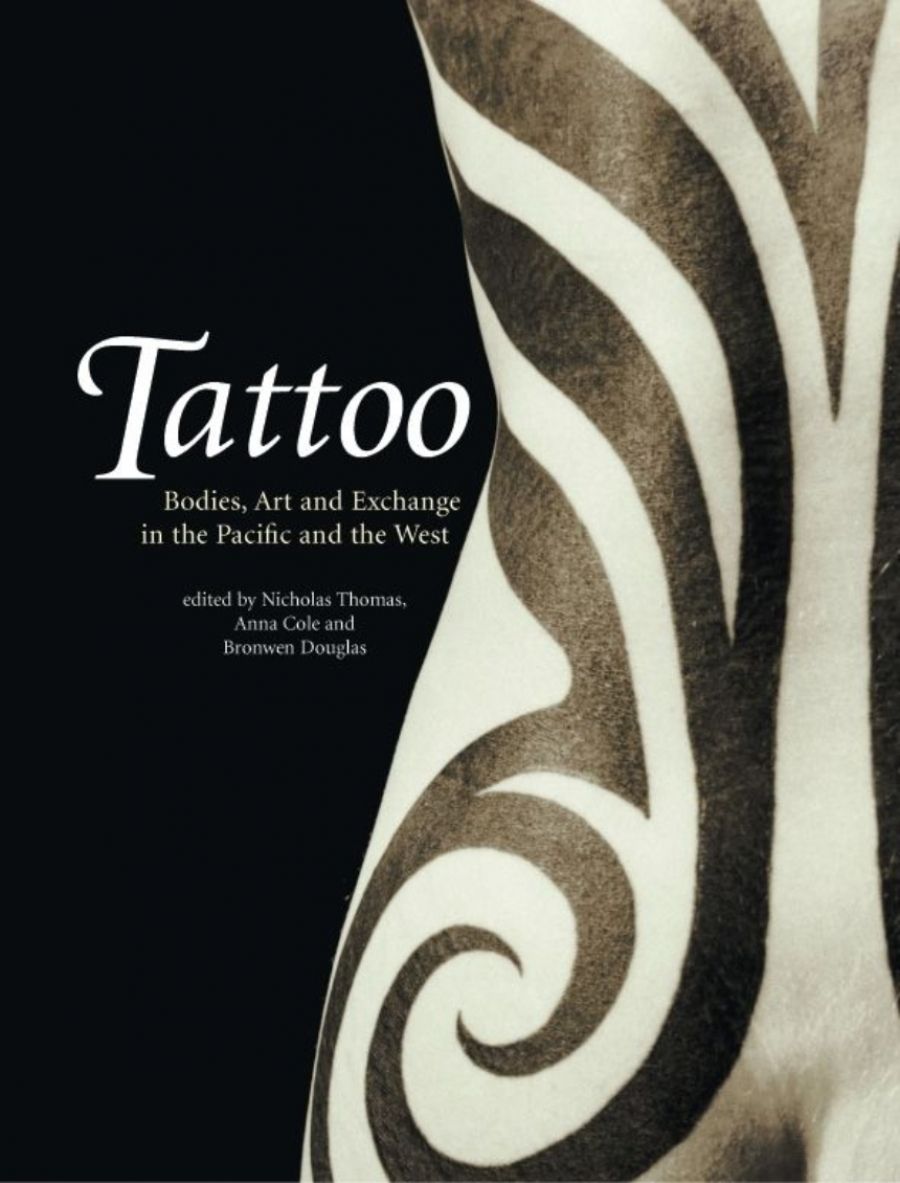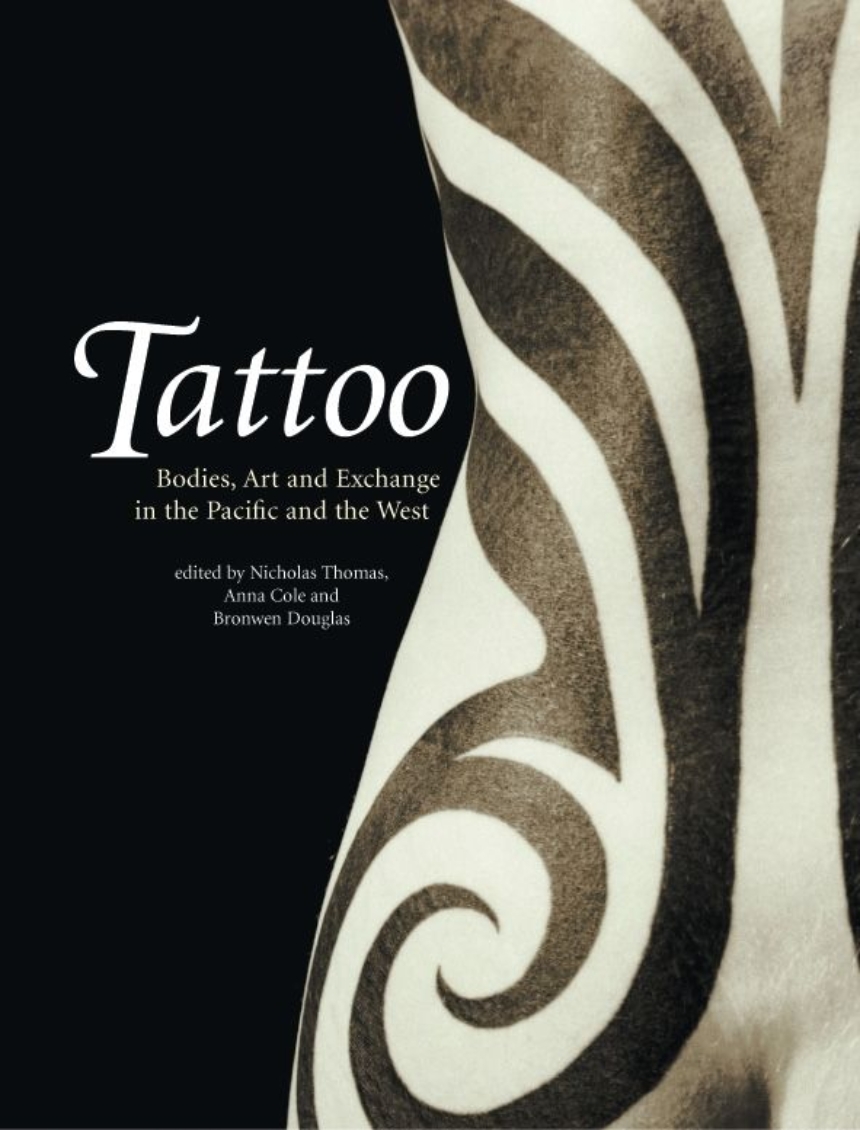
- Free Article: No
- Contents Category: Non-fiction
- Review Article: Yes
- Online Only: No
- Custom Highlight Text:
Only a few decades ago, in the developed countries of the West, tattoos were a relatively uncommon sight, and were generally associated with marginalised groups: soldiers, sailors, gangs and criminals. Since the 1980s, tattoos have become a mainstream form of bodily adornment for the young and socially edgy. This tattooing renaissance has both driven and been influenced by an increased interest in ‘traditional’ tattoo designs from the Pacific. Within Pacific societies themselves, traditional tattooing is seen as an assertion of cultural endurance and value. On the international scene, where tattoos are aligned with individualised desires, Pacific tattooing practices are prized for their strong patterns and ‘neo-tribal’ qualities.
- Book 1 Title: Tattoo
- Book 1 Subtitle: Bodies, art and exchange in the Pacific and the West
- Book 1 Biblio: Reaktion Books, $39.95 pb, 252 pp
- Book 1 Cover Small (400 x 600):

- Book 1 Cover (800 x 1200):

Despite a long history of tattooing within Europe, modern Western tattooing practices are generally viewed as commencing with the exploratory voyages of the late eighteenth century, and the resulting encounters between European seamen and Polynesian societies. English references to the word tattoo, taken from the Tahitian tatau, first appeared in 1771 in reports of Cook’s first voyage to the Pacific. Yet did this cultural moment really mark the ‘beginning’ of modern tattooing? Or, as Tattoo’s co-editor Nicholas Thomas asks, was this ‘rather a moment of stimulation, that saw an external influence reinvigorating a marginal or latent aspect of the culture of the body in Europe’?
This question lies at the heart of this rich and significant volume of essays, which firstly documents the entwined European and Pacific histories of tattooing, and then examines current globalised practices in and out of the Pacific. It is an ambitious framework, bringing together anthropological research drawn from diverse archival sources and, particularly in the contemporary section, differing literary styles. Overall, this works: the essays seldom lose their focus, and collectively cohere in incremental and sometimes unexpected ways. Most importantly, Tattoo is a sumptuous publication. There are copious illustrations, from Sydney Parkinson’s 1769 sketch of a New Zealand man (the most frequently reproduced image of early colonial travel in the Pacific), to nineteenth-century ethnographic paintings, to recent full-colour portraits of Western and Pacific tattoo artists proudly displaying their inscribed bodies. This visual narrative accompanying the written text is critical, enabling the reader to gain insight into the aesthetic and cultural dimensions of tattoo art.
European responses to Pacific practices of body modification shifted across time and place. They were also influenced by the changing conventions of ethnographic observation, racial stereotyping and, not surprisingly, by the actual outcomes (friendly, hostile) of cross-cultural meetings. Bronwen Douglas’s comparative ethnohistory outlines how early European reactions to tattooing encompassed Spanish indifference, French voyeurism and British detachment. Elena Govor tracks the first Russian circumnavigation voyage of 1804 to the Marquesas, where elaborate full-body tattooing was practised. The Russian crew, which included Leo Tolstoy’s cousin, was enthusiastic about acquiring tattoos, establishing a fashion among Russian mariners that was to become universal within decades.
Russian, British and other European seamen not only appropriated Pacific symbols but asked Pacific tattooists to transcribe dates, names and other personal references onto their bodies. Life at sea was cramped, dangerous and isolated, and tattoos were a means of expressing individuality, affirming social relationships and bearing souvenirs. In 1789 William Bligh recorded that all but three of the twenty-five Bounty mutineers bore tattoos, including hearts, initials and Tahitian motifs. Joanna White’s excellent chapter examines nineteenth-century beachcombers, who occupied a transgressive space between European and Pacific societies. ‘Going native’ often involved extensive tattooing. James O’Connell, shipwrecked in the Caroline Islands in the 1820s, was not atypical. Following his ‘rescue’, he joined an American circus, exhibiting his tattooed body while dancing an Irish jig.
In the Pacific, tattooing was a social institution, part of the cosmological order. This was grasped by evangelical missionaries, whose influence contributed to the disappearance of tatau in Tahiti. In contrast, Samoan tatau was more political than religious, and was able to coexist with Christianity. These differing historical experiences are reflected in contemporary realities. Tahitian tattooing has emerged as an aspect of cultural revitalisation, but, as Makiko Kuwahara argues, it is simultaneously positioned within global tattooing networks and localised forms of identity-making. This is a terrific essay: as Kuwahara hangs out with tattoo artists and their clients, we glimpse the daily rituals of Tahitian youth culture, and the complexities of social meanings inherent in ‘modern Polynesian style’ and ‘traditional’ motifs.
In Samoa, and among the Samoan diaspora, tatau is also a visible – and literal – marker of culture. But Samoan tattooing practice has long involved transactions with other Polynesian societies and, since colonisation, interchanges with the West. Commodification, negotiation, hybridity, nostalgia: these are all terms that gesture towards understanding the fluid processes of cross-cultural exchange around tattoo art. Or, as Thomas aptly puts it: ‘Between the blood on a sailor’s back-side and the hammering of a Samoan tattoo tool today lies a host of extraordinary stories and problems that we can only begin to explore here.’


Comments powered by CComment